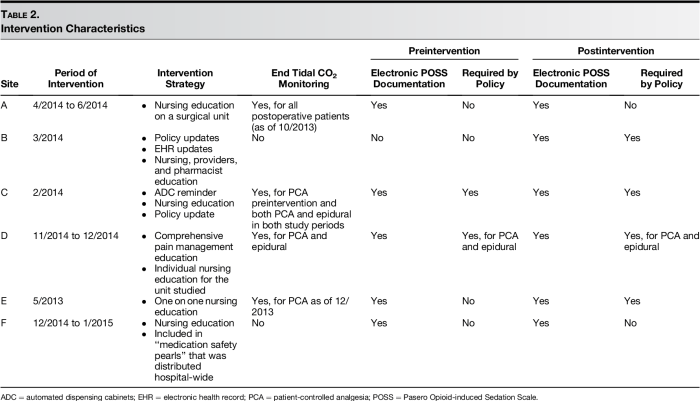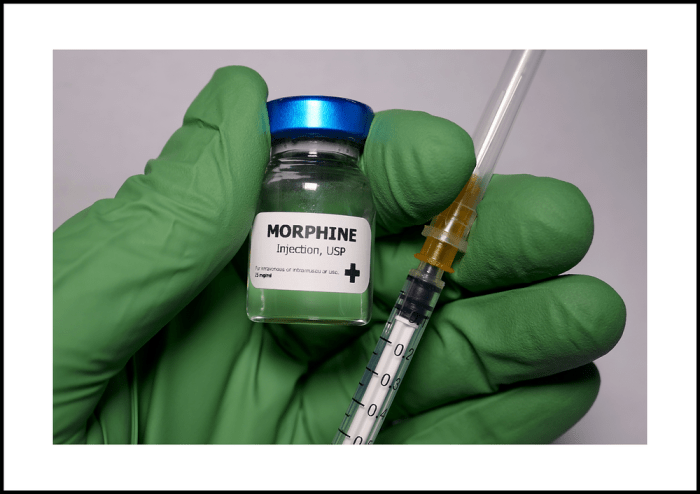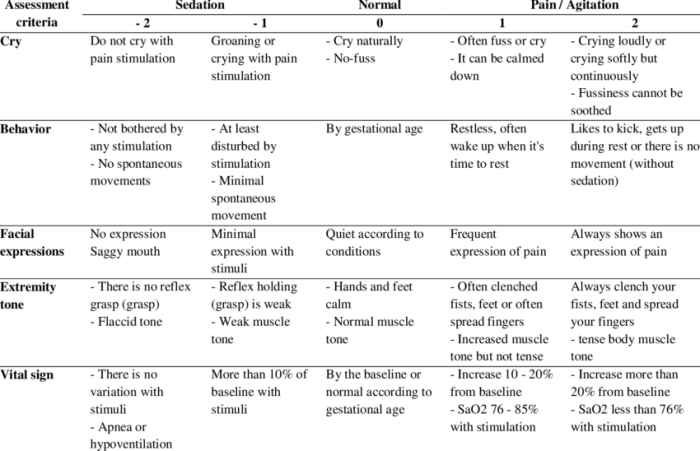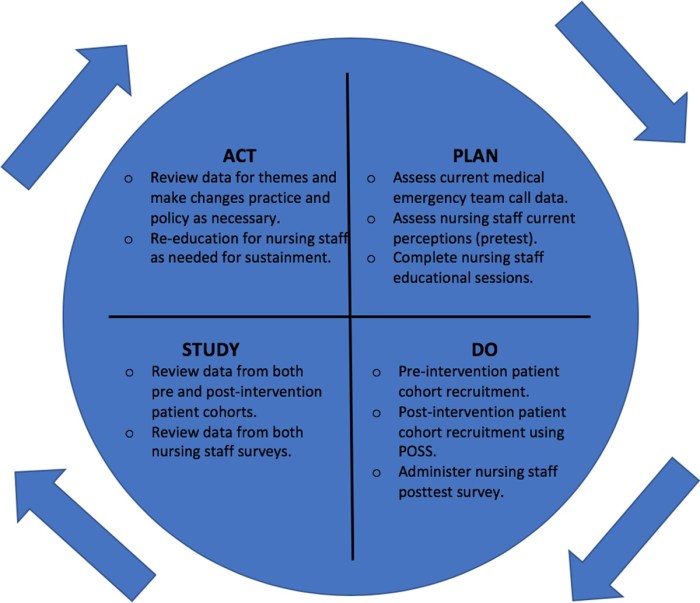Pasero opioid induced sedation scale – The Pasero Opioid-Induced Sedation Scale (POISS) has emerged as an essential tool for assessing the level of sedation in patients receiving opioids. This scale, developed and validated by Joyce Pasero and colleagues, has gained widespread acceptance due to its simplicity, reliability, and clinical utility.
The POISS consists of five key components: level of consciousness, respiratory effort, motor response, pupil size, and cough reflex. Each component is scored on a scale of 0 to 3, with higher scores indicating deeper levels of sedation. The total score ranges from 0 to 12, with scores of 0-3 indicating minimal sedation, 4-6 indicating moderate sedation, 7-9 indicating deep sedation, and 10-12 indicating unconsciousness.
Pasero Opioid-Induced Sedation Scale (POISS) Overview
The Pasero Opioid-Induced Sedation Scale (POISS) is a widely used tool for assessing the level of sedation induced by opioids in hospitalized patients.
The POISS was developed by Cheryl L. Pasero and colleagues in 1999 and has since been validated in various patient populations. It consists of five items that assess the patient’s responsiveness to verbal and tactile stimuli, as well as their ability to breathe spontaneously and maintain airway patency.
Development and Validation
The POISS was developed based on clinical observations and expert consensus. It was initially validated in a study of 100 patients receiving opioids for postoperative pain relief. The scale demonstrated good inter-rater reliability and validity, with strong correlations with other measures of sedation.
Subsequent studies have confirmed the reliability and validity of the POISS in various settings, including intensive care units, emergency departments, and long-term care facilities. The scale has also been translated into multiple languages and is widely used internationally.
POISS Assessment Components

The Pasero Opioid-Induced Sedation Scale (POISS) is a tool used to assess the level of sedation induced by opioids. It consists of five key components:
- Level of consciousness
- Respiratory effort
- Motor response
- Pupil size
- Cough reflex
Each component is assessed on a scale of 0 to 3, with 0 indicating no sedation and 3 indicating deep sedation.
Level of Consciousness
Level of consciousness is assessed by observing the patient’s response to verbal and tactile stimuli. A score of 0 indicates that the patient is fully awake and alert, while a score of 3 indicates that the patient is unresponsive to both verbal and tactile stimuli.
Respiratory Effort
Respiratory effort is assessed by observing the patient’s breathing pattern. A score of 0 indicates that the patient is breathing normally, while a score of 3 indicates that the patient is apneic.
Motor Response
Motor response is assessed by observing the patient’s response to painful stimuli. A score of 0 indicates that the patient has a normal motor response, while a score of 3 indicates that the patient has no motor response.
Pupil Size, Pasero opioid induced sedation scale
Pupil size is assessed by observing the diameter of the patient’s pupils. A score of 0 indicates that the patient has normal pupil size, while a score of 3 indicates that the patient has pinpoint pupils.
Cough Reflex
Cough reflex is assessed by observing the patient’s response to a suction catheter being inserted into the trachea. A score of 0 indicates that the patient has a normal cough reflex, while a score of 3 indicates that the patient has no cough reflex.
POISS Scoring System

The POISS is scored by assigning a numerical value to each of the five assessment components:
- Responsiveness
- Speech
- Eye Opening
- Motor Function
- Respiratory Status
Each component is scored on a scale of 0 to 3, with 0 indicating no sedation and 3 indicating deep sedation. The total POISS score is the sum of the scores for all five components, ranging from 0 to 15.The
following table provides examples of POISS scores and their corresponding levels of sedation:| POISS Score | Level of Sedation ||—|—|| 0-4 | Mild sedation || 5-9 | Moderate sedation || 10-15 | Deep sedation |Accurate scoring of the POISS is important for several reasons:
- It allows clinicians to assess the level of sedation and make appropriate adjustments to the patient’s opioid therapy.
- It helps to identify patients who are at risk for developing respiratory depression or other complications of opioid-induced sedation.
- It provides a standardized method for documenting the level of sedation over time, which can be useful for monitoring the patient’s progress and evaluating the effectiveness of treatment.
Clinical Applications of the POISS

The POISS has various clinical applications in the management of patients receiving opioids, including:
Monitoring Sedation Levels
The POISS is a valuable tool for monitoring sedation levels in patients receiving opioids. It provides a standardized and objective assessment of sedation, allowing healthcare professionals to track changes over time and make informed decisions regarding medication adjustments.
Assessing Sedation Interventions
The POISS can be used to assess the effectiveness of sedation interventions, such as dose adjustments or the use of adjunctive medications. By comparing POISS scores before and after an intervention, healthcare professionals can determine whether the intervention has been effective in achieving the desired level of sedation.
Identifying Patients at Risk for Respiratory Depression
The POISS can help identify patients at risk for respiratory depression, a serious complication of opioid use. Patients with higher POISS scores are more likely to experience respiratory depression, and the scale can be used to guide decisions regarding patient monitoring and intervention.
Advantages and Limitations of the POISS
The POISS offers several advantages and limitations that healthcare professionals should consider when using it.
Advantages
- Simplicity and ease of use:The POISS is a straightforward and easy-to-use tool that requires minimal training to administer.
- Reliability and validity:The POISS has been shown to be a reliable and valid measure of opioid-induced sedation in various clinical settings.
Limitations
- Subjectivity of scoring:The POISS relies on subjective observations by healthcare professionals, which can lead to variability in scoring.
- Potential for inter-rater variability:Different healthcare professionals may interpret the POISS criteria differently, leading to variations in scores.
Other Considerations for Opioid-Induced Sedation

When assessing opioid-induced sedation, it is important to consider patient-specific factors that may influence the sedative effects of opioids. These factors include:
- Patient Characteristics:Age, weight, and co-morbidities can all affect the way opioids are metabolized and excreted. Elderly patients and those with liver or kidney disease may be more susceptible to opioid-induced sedation.
- Type and Dose of Opioids:Different opioids have different potencies and sedative effects. The dose of opioid being administered will also affect the level of sedation.
- Concomitant Medications:Medications that interact with opioids, such as benzodiazepines and antihistamines, can increase the sedative effects of opioids.
Case Studies or Examples: Pasero Opioid Induced Sedation Scale

The POISS is a valuable tool in clinical practice, providing a structured and objective assessment of opioid-induced sedation. Several case studies and examples demonstrate its utility in various settings.
Case Study 1: Postoperative Pain Management
In a postoperative setting, a patient receiving morphine for pain management experienced excessive sedation. The POISS score was 7, indicating moderate sedation. After reducing the morphine dose, the patient’s sedation level improved to a POISS score of 3, allowing for better patient monitoring and comfort.
Case Study 2: Titration of Opioid Doses
A patient with cancer pain was receiving escalating doses of fentanyl. To ensure optimal pain relief while minimizing sedation, the POISS was used to guide dose titration. The patient’s POISS score remained below 4, indicating mild sedation, allowing for effective pain management without excessive sedation.
Case Study 3: Assessment of Respiratory Depression
A patient receiving methadone for chronic pain developed respiratory depression. The POISS score was 9, indicating severe sedation. Naloxone was administered, and the patient’s POISS score decreased to 2, confirming the opioid-induced respiratory depression and guiding appropriate treatment.
Challenges and Lessons Learned
The use of POISS in clinical practice presents challenges and lessons learned:
- Inter-rater Reliability:The POISS relies on subjective assessments, which can lead to inter-rater variability. Training and standardization are essential to ensure consistent use.
- Accuracy in Different Settings:The POISS was developed in the intensive care unit (ICU) setting. Its accuracy in other settings, such as the emergency department or general wards, may vary.
- Complementary Tools:The POISS is not a substitute for other sedation assessment tools, such as the Richmond Agitation-Sedation Scale (RASS) or the Glasgow Coma Scale (GCS). Combining different tools can provide a more comprehensive assessment.
- Need for Individualization:The POISS provides general guidance, but the optimal sedation level may vary depending on individual patient factors, such as age, comorbidities, and treatment goals.
Future Directions and Research

The POISS has emerged as a valuable tool for assessing opioid-induced sedation, but ongoing research seeks to enhance its accuracy and expand its applications.
One potential future direction is the development of more objective measures of sedation. Currently, the POISS relies on subjective observations, which can vary between observers. Objective measures, such as electroencephalography (EEG) or pupillometry, could provide a more precise and reliable assessment of sedation.
Investigating the use of the POISS in different patient populations
Another area of research is investigating the use of the POISS in different patient populations. The scale was initially developed for use in hospitalized patients, but it may also be applicable to other settings, such as outpatient clinics or long-term care facilities.
Research is needed to determine the validity and reliability of the POISS in these different settings.
Clarifying Questions
What is the purpose of the POISS?
The POISS is used to assess the level of sedation in patients receiving opioids.
How is the POISS scored?
The POISS is scored by assigning a score of 0 to 3 for each of the five components: level of consciousness, respiratory effort, motor response, pupil size, and cough reflex. The total score ranges from 0 to 12.
What do the different POISS scores indicate?
Scores of 0-3 indicate minimal sedation, 4-6 indicate moderate sedation, 7-9 indicate deep sedation, and 10-12 indicate unconsciousness.
What are the advantages of using the POISS?
The POISS is simple to use, reliable, and valid. It is also a useful tool for identifying patients at risk for respiratory depression.
What are the limitations of the POISS?
The POISS is subjective, and there is potential for inter-rater variability. It is also important to consider other factors, such as patient characteristics and concomitant medications, when assessing opioid-induced sedation.